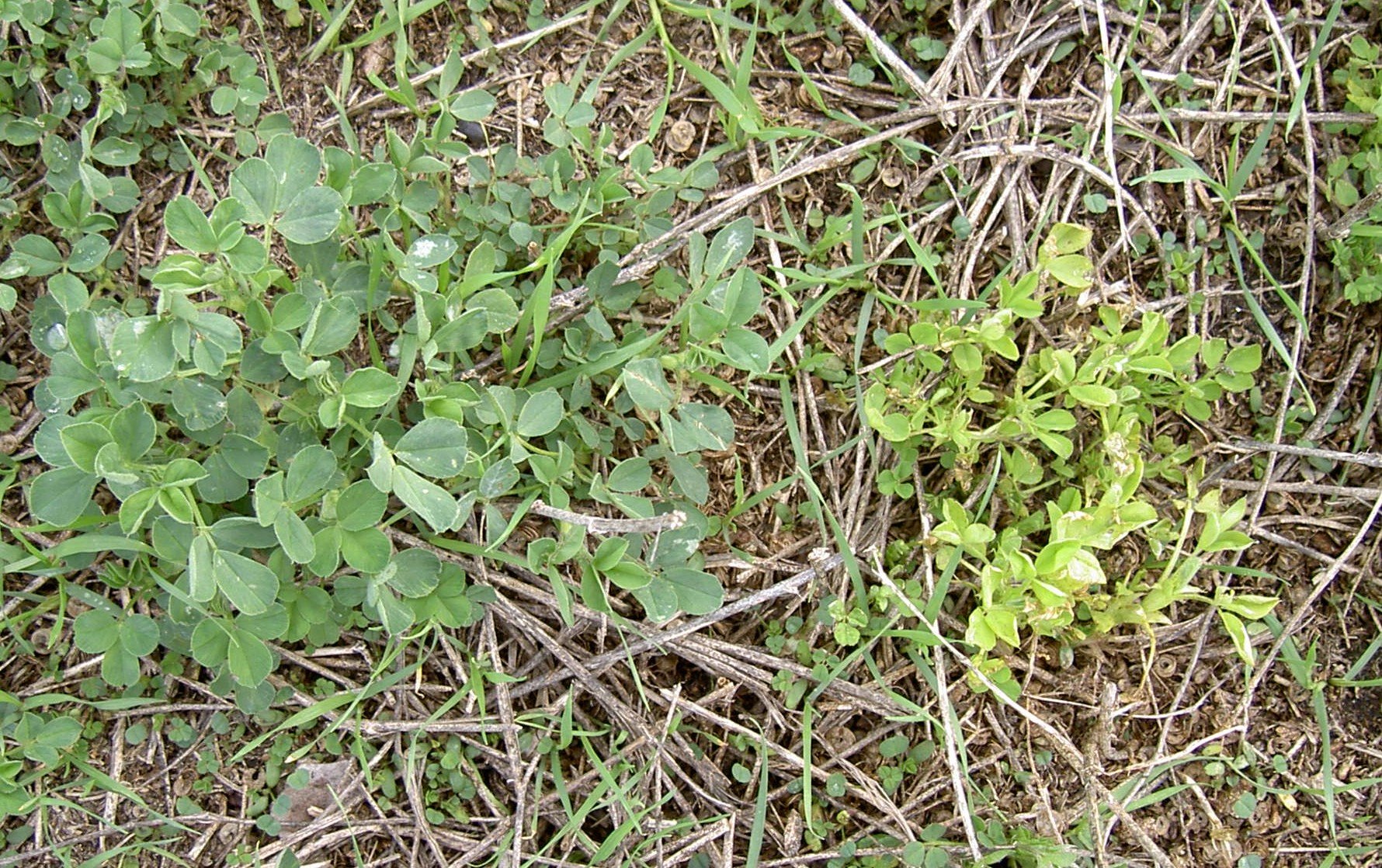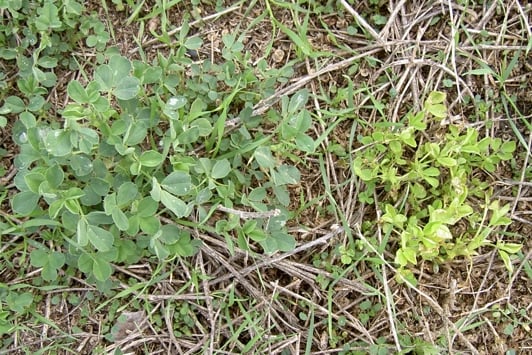
Bacterial wilt is a declared pest in WA
Bacterial wilt of lucerne is not known to occur in WA and must be reported to the department if found or suspected to be present in WA.
About bacterial wilt of lucerne
Bacterial wilt of lucerne (Clavibacter insidiosus) is a disease that reduces the lifespan and productivity of lucerne stands. It also makes lucerne crops hard to establish. This disease does not occur in WA.
The main host of the disease is lucerne (Medicago sativa). Lucerne is a fodder crop which is also known as alfalfa.
- Infected plants are stunted and yellowed.
- Leaves are small and often have dried edges.
- Dark discolouration can be seen when roots are cut open.
- Plants can die suddenly, particularly in hot weather.
Bacterial wilt reduces lucerne yield and the length of stand survival. The use of lucerne to lower the water table in areas threatened by salinity would be threatened if bacterial wilt of lucerne became established in WA.
- Bacterial wilt survives in lucerne plant material for up to 10 years and in the soil.
- The greatest risk of spread is by planting infected seed.
- The disease can also be spread by contaminated farm machinery, animals, lucerne hay and water if these are introduced to land where lucerne is grown.
Legal duty to report
Bacterial wilt of lucerne is not known to occur in WA.
Clavibacter insidiosus (McCulloch 1925) Li et al. 2018 is a declared pest under section 12 of the Biosecurity and Agriculture Management Act 2007.
This means that any person who finds or suspects the presence of bacterial wilt of lucerne must report it to the department.
WA's freedom from bacterial wilt of lucerne is supported by general and specific surveillance, and specific import requirements to prevent its entry.

